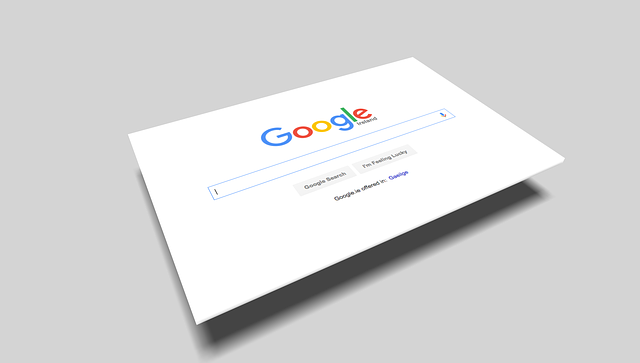Do you want to add a personal touch to your sales strategy?
Does reaching out and building relationships with important businesses and customers make you happy and increase the number of sales your business makes?
It’s true that strong communication between a business and a potential customer is crucial to enhancing sales.
Just think about it; let’s say you build a good daily relationship with your local newsagent. You become familiar with the people that work there and the value of the deals in the shop. This encourages you to return and buy more from that newsagent.
Today, you can bring this relationship to the next level by personalising your sales. By capturing information such as buyer data, online purchases and social media activity, businesses can tailor sales to the customer in the most personal way possible.
Moving leads through your pipeline needs a clear plan and strategy. If you try to sell without a defined strategy, you are likely to miss out on potential sales.
A good place to start is determining how the sale will affect the customer’s business. You are likely to capture attention by making the customer aware of the positive changes that your sale will bring.
This post shows you the best ways that you can improve your sales strategy, including keeping your first email short and sweet, creating buyer personas and using storytelling.
Table of contents:
- 1. Keep your first email to the point
- 2. Understand the company’s challenges
- 3. Add that personal touch to your sales strategy
- 4. Become trusted
- 5. Don’t get it wrong!
- 6. Be relevant
- 7. Honor your commitment
- 8. Be careful with personal information
- 9. Create buyer personas
- 10. Provide the solution to the problem
- 11. Showcase end results of your sales strategy
- 12. Be flexible
- 13. Start with smaller markets
- 14. Reach out to the decision maker
- 15. Use storytelling
- 16. Stay attentive during sales calls
- 17. Listen carefully to your prospects
- 18. Using the BANT framework
- 19. Knowing when to automate
- 20. Getting the timing right
- 21. Use internal growth strategies
- 22. Achieve a win-win
- 23. Be honest about risks in your sales strategy
- 24. Have a strong mindset
- 25. Give demos of your product
- 26. Using the PAS framework
- 27. Be helpful
- 28. Ask for a referral
1. Keep your first email to the point

You need to truly engage your prospect in the first email. They will likely have hundreds of sales emails to get through, so yours really needs to stand out from the crowd. Keeping things simple and showing that you have done your research is a good place to start. This also includes email verification as an important step in your research and prospecting process. You don’t need to pitch your solution immediately. Establishing trust with the lead is the important first step you need to take. Be sure to save emails that have been successful in the past and use them again. Right Inbox’s gmail templates tool is a great solution for this.
The first email is better off being short, possibly bullet pointed and as clear as possible. It should be clear why your solution is relevant to the prospect. You should arrange a meeting with the prospect in the first email. This is then followed by a simple summary of what you like to discuss.
The best time to send cold emails is between 5-6 am (37% open rate; 8% response rate) and 7-9 pm (48% open rate; 8% response rate).
2. Understand the company’s challenges

Following the first call, you are likely to have a better understanding of the company’s challenges. This can be used for greater personalisation in the next phase. For example if the business told you they had an issue with their CRM and you were selling this service, you can use this to your advantage.
Sharing valuable content that provides solutions to the company is a good next step. By reaching out to them and sharing an article about alternative CRMs, you will show that you listened to your first conversation and care about helping them. Building a relationship with the prospect is always important to improving your sales strategy.
3. Add that personal touch to your sales strategy

We all want to feel valued in a business relationship. This is no different when it comes to sales. Adding that personal touch when discussing a potential sale will set you apart from the crowd. This can be anything from finding out more about the prospect’s hobbies and interests, or the sports team that they follow.
This is usually best achieved after an in-person meeting, where you can give them a handwritten note about something they are interested in. You can establish trust with them quickly as this is a physical connection that will help create a bond.
4. Become trusted
Becoming trusted in sales is hugely important. Once you build a strong relationship with a customer, this can then snowball into further relationships such as becoming partners. A sale does not have to be the end of the relationship!
Once you become trusted you will become a partner of the client. This can lead to upselling and more renewals, which will increase revenue for your business. You will also get more referrals from being trusted. It’s common sense that customers will refer to someone that they know and trust. Whether it’s a sales strategy for startups or a sales strategy for real estate, building relationships is key for improving your sales strategy.
5. Don’t get it wrong!

Making sure that you don’t get it wrong when it comes to personalisation seems obvious. However it’s surprising how many people do get it wrong!
You need to promote products that are relevant to the prospect. It’s also important to get the name, gender and other personal information right. You need to be sincere when reaching out for the potential sale, otherwise no one will take you seriously!
6. Be relevant

Always try and provide value to the person you are talking to. With this at the back of your mind, you will keep the prospect genuinely interested in what you are saying to them.
Your content needs to be tailored to the person you are talking to, so watch out for spam like emails or badly personalised content.
7. Honor your commitment

It’s important to deliver what you promised once you have built a relationship with the prospect. Let’s say you tell them you will provide a discount on the product. You need to honor this. If you forget to give them the discount or take too long in giving it to them, then the prospect might feel that the relationship is not being respected.
This comes back to nurturing the prospect in the sales funnel and keeping them satisfied with the business relationship.
8. Be careful with personal information
It’s no secret that businesses are collecting more personal information about customers than ever before. This doesn’t make everyone feel comfortable though!
Be careful with the amount of personal information that you show to potential customers. They won’t want to feel as though you are stalking them!
9. Create buyer personas

It’s essential to develop clear buyer personas for your brand. With these in mind, you can target your product to the type of person that will be interested in your product. Having precise data about your customers is a must here, so make sure you have the best resources available to you.
Let’s say you are developing a sales strategy for hotels. If you own a hotel that also features a golf resort, you can target your hotel to people who play golf. Similarly if there is a state of the art leisure centre you can focus on people who are interested in fitness.
10. Provide the solution to the problem

When you start your sales outreach, remember to relate to the problems that the business is facing. The potential customer likely won’t be interested in your pricing plans or product features at this early stage. That’s why it’s important to do your research to try to understand what issues the prospect is facing and how you can solve them with your product.
This level of personalisation will capture the prospect’s attention immediately. It shows that you have put work in to helping them. You understand what they are aiming to do and which obstacles they will face. Instead of talking about how great your product is, show how your product provides the solution to their problems. They are also much more likely to become loyal customers if you take this approach.
11. Showcase end results of your sales strategy

Another thing you need to highlight when you are selling your product is the end results it will provide. They need to know exactly what will happen as soon as they start using the product. People want to know how their problems will be solved quickly and easily by using your solution.
If it’s the first time they are using your type of product, you need to show them how to get set up, how much time it will take and the amount of support they will have available to them. It would also be good to show them the expected results short-term and long-term from using the product. This will motivate them to stay with the product as they will also want to succeed!
12. Be flexible

It’s also important to remain open minded when trying to close a sale. Different businesses will have different objectives and issues, so you need to change your approach depending on who you are talking to.
Again, solving the problem of the person is key to being successful in sales. And everyone will have different issues! Make sure to always be open to solving the problem. The best way to showcase that you value your customers’ time is to provide them with real-time support options directly on your website. An easy solution is to install WordPress live chat plugins as they can create memorable, hassle-free customer experiences, which are essential for retaining customers. Don’t say that you can’t or it’s not possible to provide a solution. If you are unsure of how to help the prospect, tell them that you would love to assist them and go away to research the issue. Even if this means offering a minimum order quantity you will come closer to closing the sale and remaining flexible to the situation.
13. Start with smaller markets
Having clear segmentation for your product is crucial. You need to define small groups of people who share a common problem that you can solve. By doing this, your sales strategy will feel more personal and be much more effective.
Think about it – your pitch will be so much better if you have a similar and smaller group of people to target. This will allow you to improve on certain areas of your sales pitch and help to keep the prospect engaged.
14. Reach out to the decision maker

You don’t want to waste time talking to someone who doesn’t make the decisions in the company. Reaching out to someone who makes crucial decisions for the company’s future will always improve your chances of making a sale.
Finding the right person is an important skill to master. Platforms such as LinkedIn are probably best used for connecting and messaging the people in control. It also allows you to identify the CEO/Marketing Manager of the company by job title. You need to provide value upfront to the decision maker and initially not expect anything in return. By building the business relationship in this way, you can provide immediate value and get that value back as the relationship develops.
15. Use storytelling
It’s true that storytelling is important to capturing your lead’s attention. Telling an effective human story that involves your products is sure to keep the prospect engaged. People have always been interested in great stories, and it’s no different when it comes to sales.
Storytelling is also a great way of building trust with potential customers. You can tell stories of how previous customers overcome their challenges by using your product. This will make them trust you enough to go to the next stage and use your product.
16. Stay attentive during sales calls

This should be an obvious one, but you need to concentrate during your sales calls! The person on the line needs to feel that you are giving them your undivided attention. If you are calling from a busy and loud office space, try and move somewhere quieter where you can 100% concentrate on the lead.
Constant communication during the call is a must, as well as being an active listener. This will allow you to respond to anything the person asks you during the call. Keeping engaged really is an essential part of making that sale! Here’s some more cold calling tips to boost your success rate and help you hit your numbers faster.
17. Listen carefully to your prospects

Similar to the last point, but you really need to listen to what your prospects are saying. You will get valuable feedback on the quality of your product from these calls. This can be shared with your team to gradually improve your product and also to keep your prospects happy.
It’s also important to determine whether the feedback is valuable or not. Try not to share feedback or implement changes that don’t fit into your roadmap or from people who are not in your target market.
18. Using the BANT framework

It’s important to use the BANT framework when qualifying leads. This stands for budget, authority, need and timeline. Does the prospect have the funds to allow them to buy? Are you talking to the key decision maker in the business? Is it possible to solve their problems? Over what time period are they planning to invest in a solution?
By asking these questions, you can quickly determine if the prospect has a need. If they have short answers then it could mean they are not interested.
19. Knowing when to automate

Streamlining your sales process with great automation tools will save you time. Usage of AI in eCommerce is a great example of this. Automating steps of the follow up process is always a good idea.
Any task that doesn’t need you there should be automated with great software! Ask yourself the following questions; Can it be eliminated? Can it be automated? Can it be delegated?
20. Getting the timing right

Creating effective and timely follow-up emails is an important strategy. If someone doesn’t respond to your first email, don’t worry! You need to think about how you will capture attention in your follow up emails.
A useful tool to time your emails is the ‘Send Later’ feature a lot of email celints have. You can prepare your emails to automatically send if you don’t get a reply within a specific period of time. A gmail desktop app can help with this because they have the Send Later feature as well as ‘Undo Send’.
A simple message, asking for an opinion on the first email usually works well. You can also provide interesting results that have helped customers, or share valuable content. If you plan this email sequence over time, you are likely to get results!
21. Use internal growth strategies

Keeping an open mindset and trying everything with your sales strategy is always a good idea. If you are in any way unsure of your sales strategy, trying things like email marketing, video marketing or setting up appointments with people is a good idea.
This will allow you to understand what’s working in your sales strategy and what isn’t. After implementing these ideas, make sure to follow analytics and decide which idea is working best.
22. Achieve a win-win

Trying to achieve a win-win is a crucial strategy in any area of business. You need to provide value to the person you are communicating with. This way both parties come out benefitting from the conversation.
Think about it from their point of view. You want to get a sale across the line, but they want to receive genuine value for their buck and be satisfied with the product. If you keep this in mind you are much more likely to succeed.
23. Be honest about risks in your sales strategy
Be honest about any risks related to your product. This will be appreciated by the person you are selling to. As well as highlighting the best aspects of your product, you should tell them about any possible risks from using it. This will show that you are an honest salesman/saleswoman, and are much more likely to be trusted.
For example, with a sales strategy for solar products you would need to tell the prospect of any risks from using the solar product.
24. Have a strong mindset
You need to have a strong mindset when it comes to sales. There is no doubt that you will receive plenty of rejections when you start off. Becoming used to this and taking rejections as a positive is a good place to start. help
Any great business starts by having people who are not afraid of rejection and will continue to work on if they are being told no.
25. Give demos of your product

Showing the prospect how your product works in person is always a great idea. This will help them to understand how the product works, and how it might solve a particular problem for them. It’s best to meet the prospect in person and show them face-to-face, as this develops trust and a clear demonstration of how the product works.
Therefore, a free demo is one of the main ways to convert leads into customers on SaaS, but, sometimes, achieving this conversion is not easy. Find out how to convert leads with your Demo in this post by Nementio, an Inbound Marketing agency specializing in SaaS and B2B Services.
26. Using the PAS framework

The PAS framework is a great concept to have in mind when approaching sales. This stands for problem, agitate, solution. Again, finding the problem that your product will solve for the prospect is essential.
You need to identify what the biggest problem is. Then, you need to agitate them by reminding them of how dangerous this problem is. You then need to present your product as the number one solution to solve this.
27. Be helpful

This seems like an obvious one, but it’s always important to remain helpful. During your sales call or meeting you need to assist the person in the best way possible. Make sure to answer any questions quickly and clearly.
When discussing a potential sale, you need to personalise for the prospect and ensure they know you have done your research.
28. Ask for a referral

Usually when you ask for a referral there is rarely a follow-up. You can get higher quality referrals if you take your time and identify your prospects in advance. A good way of doing this is on LinkedIn where you can browse connections and previous companies they have worked for.
Giving your connection a referral candidate and handing them the ammunition to contact them straight away makes everything easier.
And there you have it! These are 28 simple ways that you can evolve your sales strategy and grow revenue.
From providing solutions to prospect problems, using the BANT framework, and having a strong mindset, these ideas allow you to bring your sales strategy to the next level and create a better selling experience for both you and the prospect.

David Coen
_1650358822370_resize.jpg)

